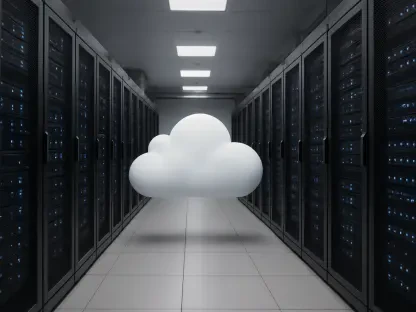Often taken for granted, the seamless operation of cloud services is a foundational aspect of the digital age. Yet, as usage becomes increasingly ubiquitous, so too does the potential for impactful disruptions. This article casts a retrospective eye over ten years of Microsoft Azure, examining the instances where this vital service faltered and what was learned in the aftermath. As enterprises and individuals alike heavily depend on these services, the comprehensive analysis of Azure’s outages underscores the vulnerability and far-reaching consequences of cloud disruptions.
High-Profile Azure Service Interruptions
For those immersed in digital workflows, the early 2023 Azure outage was more than a mere inconvenience. Core Microsoft services, including Teams, Office 365, and Outlook, became inaccessible for about three hours. This incident was not an isolated episode. It highlights the complex and interdependent nature of cloud service provision ecosystems. Users across the globe felt the impact, as a network issue inadvertently sliced through the internet connectivity that underpins these fundamental offerings. This high-profile interruption serves as a reminder that even the giants of tech are not immune to the unforeseen snags that lie within vast online infrastructures.This recent service interruption echoes past events, confirming that not only the regular user but also the global economy is at the mercy of such outages. Each disruption rings alarm bells, raising questions of sustainability and reliability in our increasingly cloud-based world.
Patterns and Causes of Azure Downtimes
Azure’s journey over the past decade has been punctuated by numerous other service outages, each with its own cause and each a lesson in resilience. From cooling system failures due to severe weather, as was the case in San Antonio in 2018, to the alarming activation of fire-suppression gas during routine maintenance in 2017, the reasons behind the downtimes illuminate the range of threats to cloud stability. These vulnerabilities have shown that not only tech issues but also natural and human-induced factors can cripple operations, pointing out the inherent challenges of maintaining cloud reliability.The outages of 2017, affecting data centers in Japan and other global locations, were primarily linked to cooling system malfunctions and indeterminate issues that disrupted services like Office 365 and Xbox Live. These failures are emblematic of the perpetual struggle against the unpredictability of technical ecosystems and the environmental conditions that engulf them.
Technical Glitches Leading to Outages
Rewinding to 2014, Azure users encountered significant disturbances when a configuration change intended to improve Blob storage instead triggered servers to enter an infinite loop. This unintended moment of havoc, along with multiple outages in August of that year, affected a wide expanse of Azure regions, illustrating the ripple effects that can occur across a distributed network. Such scenarios are stark examples of the delicate balance service providers grapple with: the essential need to innovate and improve services while ensuring stability and uptime.The leap year bug of 2012 is another harrowing example, where an oversight in time calculation barred Azure customers from vital application management capabilities for close to 24 hours. This event, among others, has been instrumental in teaching the importance of attending to the minutiae in system designs. It was a reminder of the fragility inherent in even the most robust of systems.
Undersea Cable Vulnerabilities
Cloud services have quietly become a cornerstone of our digital lives, often functioning so reliably that we scarcely notice their presence—until they fail. As we’ve grown more dependent on these platforms, the stakes have risen dramatically when they falter.









